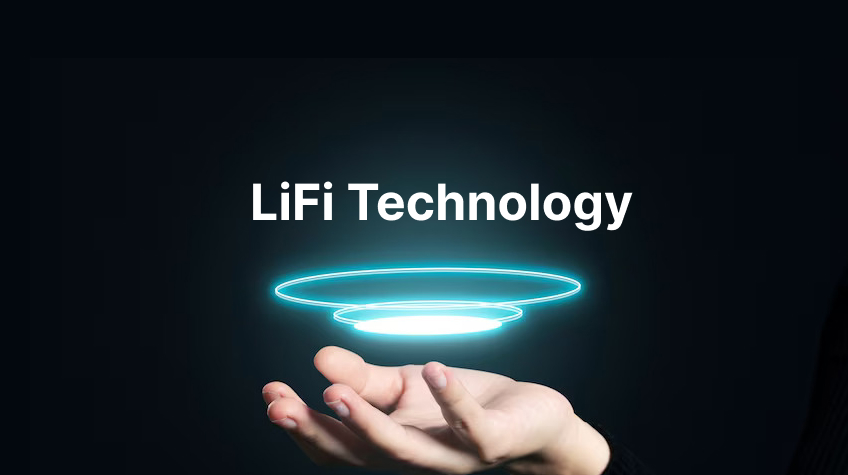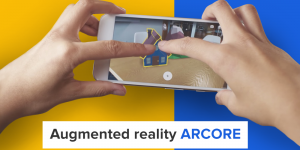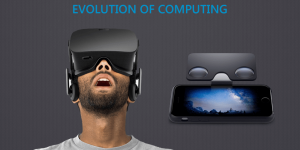
In a world where the pace of technological advancement seems boundless, a revolutionary innovation has emerged, bringing the realms of science fiction tantalizingly close to reality. Enter LiFi technology, a beacon of hope illuminating the future of wireless communication.
Unlike its ubiquitous counterpart, Wi-Fi, Li-Fi utilizes the humble light bulb to transmit data at astonishing speeds, promising a world where the internet can be accessed and shared through the flicker of light. Embracing this luminescent marvel, humanity moves into a realm where connectivity and illumination converge, illuminating our devices and lives. Welcome to the radiant world of LiFi!
About LiFi Technology
Light Fidelity (Li-Fi), a fascinating innovation in wireless communication, harnesses the power of light to transmit data, making it a shining star in the technology galaxy. Imagine the simple flicker of a light bulb carrying information at lightning speeds! This captivating concept enables data transfer through rapid fluctuations in light intensity, rendering traditional Wi-Fi almost passé.
Li-Fi offers hope in congested networks as our world becomes increasingly connected, providing faster and more secure data exchange. Embracing this marvel, we bask in a future where internet access becomes as effortless as turning on a light. Say hello to the radiant future of Li-Fi!
How LiFi Technology Works?
LiFi technology operates like magic, transforming ordinary light sources into data carriers. When data is to be transmitted, an LED light bulb flickers at incredibly high speeds, too swift for the human eye to detect. These fluctuations encode data from a light-sensitive receiver (e.g., a photodiode) on the receiving end. The receiver then decodes the changes in light intensity, converting them back into usable data.
This ingenious process enables seamless wireless communication with remarkable speed and security, as light cannot penetrate walls like radio waves. Li-Fi opens the door to a dazzling future where our devices dance in tune with the flicker of light.
LiFi Technology Advantages
- Lightning-fast data transfer speeds are much higher than traditional Wi-Fi.
- Enhanced security due to the inability of light signals to penetrate solid objects like walls.
- Reduced electromagnetic interference, making it ideal for sensitive environments.
- Immunity to radio frequency interference, providing a stable connection.
- No spectrum congestion, as light can be used as a separate channel from radio waves.
- Energy efficiency, as LED bulbs used for Li-Fi consume less power than Wi-Fi routers.
- Simultaneous data and illumination provide dual functionality in a single setup.
- Potential application in areas with restricted radio frequencies, like hospitals or aircraft.
- Promotes the development of smart lighting systems that integrate data communication.
- Eco-friendly option that utilizes existing lighting infrastructure.
Also See: How to Maximize the Benefits of 5G Networks
Li-Fi Technology Limitations
- Line-of-sight communication is required between the transmitter and the receiver, limiting mobility and coverage range.
- The inability to pass through solid objects means that Li-Fi cannot be used in scenarios where seamless connectivity is needed across walls or obstacles.
- Susceptibility to interference from natural light sources or other light-based systems, affecting data transmission.
- High implementation cost, as specialized LED bulbs and receivers are needed for Li-Fi setups.
- Limited compatibility with existing devices necessitates integrating Li-Fi support in smartphones, laptops, and other gadgets.
- Diminished performance in outdoor settings, as sunlight can overpower the flickering LED signals.
- Challenges in maintaining a stable connection in crowded environments where multiple light sources may interfere with each other.
- Potential health concerns related to constant exposure to bright LED light sources.
- Lack of standardization hinders the widespread adoption and interoperability of Li-Fi technology.
- Vulnerability to security breaches through windows or transparent materials, as light signals can leak outside a confined space.
Features of LiFi Technology
- Wireless data communication technology that uses light as a medium for data transmission.
- Utilizes LED bulbs or other light sources to send data through rapid light intensity fluctuations.
- Offers incredibly high data transfer speeds, reaching Gigabit-per-second rates.
- It provides a more secure data transmission method than traditional Wi-Fi, as light signals cannot pass through solid objects like walls.
- It reduces electromagnetic interference, making it suitable for sensitive environments like hospitals or aircraft.
- Immune to radio frequency interference, ensuring a stable and reliable connection.
- Enables data communication and illumination simultaneously, offering dual functionality in one setup.
- Supports bidirectional communication, allowing devices to send and receive data using Li-Fi.
- Potential to alleviate network congestion by using light as a separate communication channel from radio waves.
- Promotes energy efficiency, as LED bulbs use less power than standard Wi-Fi routers.
- Enables the development of smart lighting systems, integrating data communication capabilities into everyday lighting fixtures.
- Offers a viable solution for areas where radio frequencies are restricted or not allowed.
- Being an eco-friendly option, it utilizes existing lighting infrastructure to deploy data communication.
- Holds promise for future advancements and innovations in wireless communication technology.
LiFi Technology Applications
- Traffic management and road safety through real-time data transmission and communication between vehicles and infrastructure.
- Revolutionary medical applications enable high-speed data exchange for diagnostics, patient monitoring, and telemedicine in healthcare settings.
- Advancements in aviation, offering secure and high-speed data transfer for in-flight entertainment, communication, and aircraft maintenance.
- Underwater communication breakthroughs enable seamless data exchange for exploration, underwater robotics, and research.
- Elegantly integrated lighting systems also serve as data communication points, revolutionizing smart homes and public spaces.
- A revolutionary interior map-reading system designed to assist visually impaired individuals, providing them with real-time navigation support.
- Reliable communication in dangerous and sensitive environments where traditional wireless technologies might pose risks or face interference.
- Transforming transportation systems with efficient data exchange, benefiting autonomous vehicles, public transport, and logistics.
- Boosting productivity and connectivity in industrial areas allows seamless machine-to-machine communication and data exchange.
- Li-Fi’s unique potential for laptops and gadgets facilitates data transmission through ambient light, making it a promising technology for future portable devices.
What is the difference between Li-Fi and Wi-Fi Technology?
Medium of Communication
- Wi-Fi: Uses radio waves to communicate through the air.
- Li-Fi: Utilizes light waves for data transmission, typically through LED bulbs.
Speed and Bandwidth
- Wi-Fi: Offers relatively high data transfer speeds but is slower than Li-Fi.
- Li-Fi: Provides significantly faster data transfer rates, capable of reaching Gigabit-per-second speeds.
Range and Coverage
- Wi-Fi: Has a broader coverage area and can penetrate walls and obstacles for more comprehensive connectivity.
- Li-Fi: Limited range as the light source must be directly visible to the receiver, making it more suitable for localized communication.
Security
- Wi-Fi: Prone to security vulnerabilities, as radio waves can be intercepted or hacked.
- Li-Fi: Offers enhanced security since light signals cannot pass through solid objects, reducing the risk of unauthorized access.
Interference
- Wi-Fi: Susceptible to electromagnetic interference from other devices and appliances using radio frequencies.
- Li-Fi: Immune to radio frequency interference, ensuring a more stable and reliable connection.
Energy Efficiency
- Wi-Fi: Consumes more power as it requires dedicated routers and devices.
- Li-Fi: Energy-efficient, as it utilizes existing LED lighting infrastructure for data transmission.
Applications
- Wi-Fi: Widely used for general wireless communication in homes, offices, public spaces, and outdoor areas.
- Li-Fi: Ideal for specialized applications such as medical facilities, underwater communication, secure environments, and data-intensive industries.
Adaptability
- Wi-Fi: Compatible with a wide range of devices with built-in Wi-Fi capabilities.
- Li-Fi: Requires specific light-sensitive receivers in devices to communicate via Li-Fi.
Deployment
- Wi-Fi: Well-established and widely deployed technology worldwide.
- Li-Fi: Still in the early development and deployment stages, with limited widespread adoption.
Future Potential
- Wi-Fi: Continues to evolve with new standards and improvements for higher speeds and performance.
- Li-Fi: Holds immense potential for the future, with possibilities for integration with emerging technologies like the Internet of Things (IoT) and smart lighting systems.
When will LiFi be available?
Welcome to the dawn of a new era! As we progress through 2024 and beyond, the technology landscape holds a bright promise: the rise and deployment of a groundbreaking LiFi Internet Infrastructure. With meticulous attention to LiFi system functionalities, experts are working tirelessly to pave the way for universal Li-Fi compatibility.
This ambitious endeavor aims to make Li-Fi a household name, bringing this innovative technology to the masses. Anticipate seamless integration, lightning-fast data speeds, and enhanced security as Li-Fi takes center stage in wireless communication. Embrace the forthcoming Li-Fi revolution as we step into a future where light illuminates our lives and our connectivity too!
In conclusion, Li-Fi technology is an ingenious innovation that utilizes light waves as a means of transmitting data, revolutionizing the world of wireless communication. By employing LED bulbs or other light sources, Li-Fi achieves remarkable data transfer speeds, outpacing traditional Wi-Fi. Rapid fluctuations in light intensity encode data, which light-sensitive receivers receive and decode.
Offering enhanced security and reduced electromagnetic interference, Li-Fi opens doors to a brighter, more connected future. As the Li-Fi revolution unfolds, we are poised to witness its integration into various industries, empowering us with a faster, more reliable, and secure means of communication, all powered by the brilliance of light.






